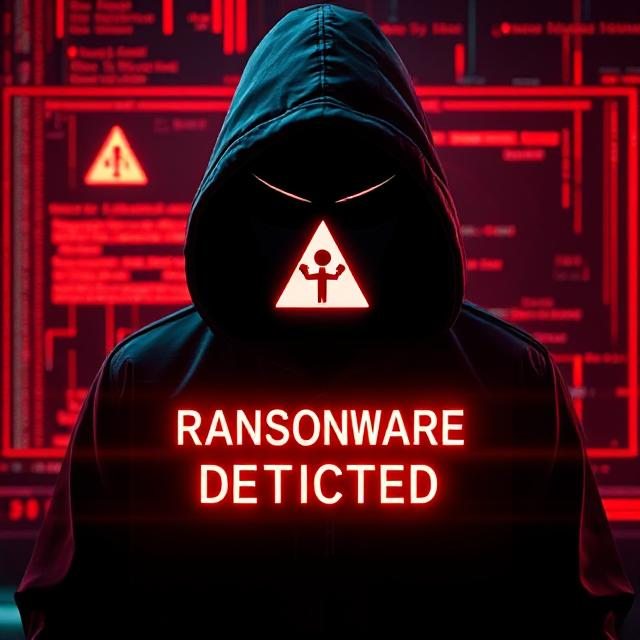Advanced Ransomware Protection Strategies

Ransomware attacks have evolved from opportunistic crimes to sophisticated operations targeting critical infrastructure. As these attacks become more advanced, organizations must implement equally sophisticated protection strategies. At Nyx Dynamics, we've been at the forefront of developing and implementing advanced ransomware protection for critical infrastructure.
The Evolving Ransomware Threat
Modern ransomware attacks are no longer simple "encrypt and demand payment" operations. Today's ransomware groups employ multi-faceted attack strategies that include:
- Double Extortion: Stealing sensitive data before encryption and threatening to publish it if the ransom isn't paid.
- Supply Chain Attacks: Compromising trusted software providers to distribute ransomware to their customers.
- Living Off the Land: Using legitimate system tools to avoid detection while moving through the network.
- Targeting Backups: Specifically seeking out and destroying backup systems to prevent recovery.
These sophisticated tactics require equally sophisticated defense strategies, particularly for critical infrastructure where the consequences of an attack can extend far beyond financial losses.
Comprehensive Protection Strategy
Based on our experience protecting critical infrastructure from ransomware, we recommend a comprehensive strategy that includes:
The 3-2-1-1-0 Backup Strategy
3 - Maintain at least three copies of critical data
2 - Store the data on at least two different types of storage media
1 - Keep at least one copy offsite
1 - Keep at least one copy offline (air-gapped)
0 - Ensure zero errors through regular testing and verification
Advanced Technical Controls
Beyond backups, organizations should implement a range of technical controls to prevent ransomware attacks:
- Network Segmentation: Divide networks into segments to contain potential infections and prevent lateral movement. This is particularly important for critical infrastructure, where operational technology (OT) networks should be isolated from information technology (IT) networks.
- Application Whitelisting: Only allow approved applications to run on systems, preventing the execution of ransomware.
- Advanced Email Protection: Implement sophisticated email filtering to block phishing attempts, a common initial vector for ransomware attacks.
- Endpoint Detection and Response (EDR): Deploy EDR solutions that can detect and respond to suspicious behavior in real-time.
- Regular Patching: Maintain a rigorous patching program to address vulnerabilities that could be exploited by ransomware.
Human Factors and Training
Technical controls alone are not sufficient. Organizations must also address human factors:
- Security Awareness Training: Regularly train employees to recognize phishing attempts and other social engineering tactics.
- Simulated Phishing Exercises: Conduct regular phishing simulations to test and reinforce training.
- Clear Incident Response Procedures: Ensure all employees know how to report suspicious activities and what to do if they suspect a ransomware attack.
Case Study: Protecting Critical Energy Infrastructure
One of our energy sector clients recently faced a targeted ransomware attack that could have had devastating consequences. Thanks to the advanced protection measures we had implemented, the attack was detected and contained before it could affect critical systems.
Key factors in the successful defense included:
- Early Detection: Our AI-powered monitoring system detected unusual activity in the network perimeter and alerted the security team.
- Rapid Isolation: Affected systems were automatically isolated from the network, preventing the spread of the ransomware.
- Resilient Backups: The client had implemented our recommended 3-2-1-1-0 backup strategy, allowing for rapid restoration of affected systems.
- Well-Practiced Response: The security team had regularly practiced their ransomware response plan and executed it flawlessly.
As a result, the attack was contained to a small number of non-critical systems, and operations continued without interruption. The affected systems were restored from backups within hours, and no ransom was paid.
Looking Ahead: The Future of Ransomware Protection
As ransomware attacks continue to evolve, so too must our protection strategies. At Nyx Dynamics, we're investing in several areas to stay ahead of emerging threats:
- AI-Powered Threat Detection: Developing more sophisticated AI models that can identify potential ransomware attacks at the earliest stages.
- Secure-by-Design Systems: Working with clients to implement security from the ground up, rather than adding it as an afterthought.
- Collaborative Defense: Participating in industry information sharing initiatives to ensure that knowledge about new threats is quickly disseminated.
By combining these advanced technologies with proven security practices and human expertise, we can provide effective protection against even the most sophisticated ransomware threats.
About the Author

Sophia Chen
Threat Researcher at Nyx Dynamics
Sophia specializes in researching emerging cyber threats, with a particular focus on ransomware. She has helped numerous organizations recover from and build defenses against sophisticated ransomware attacks.